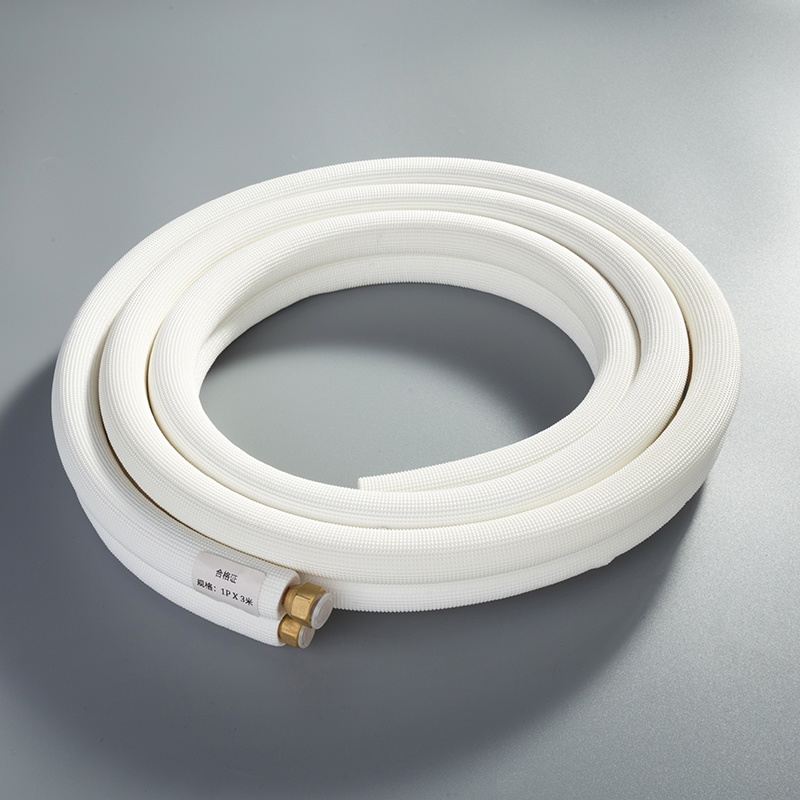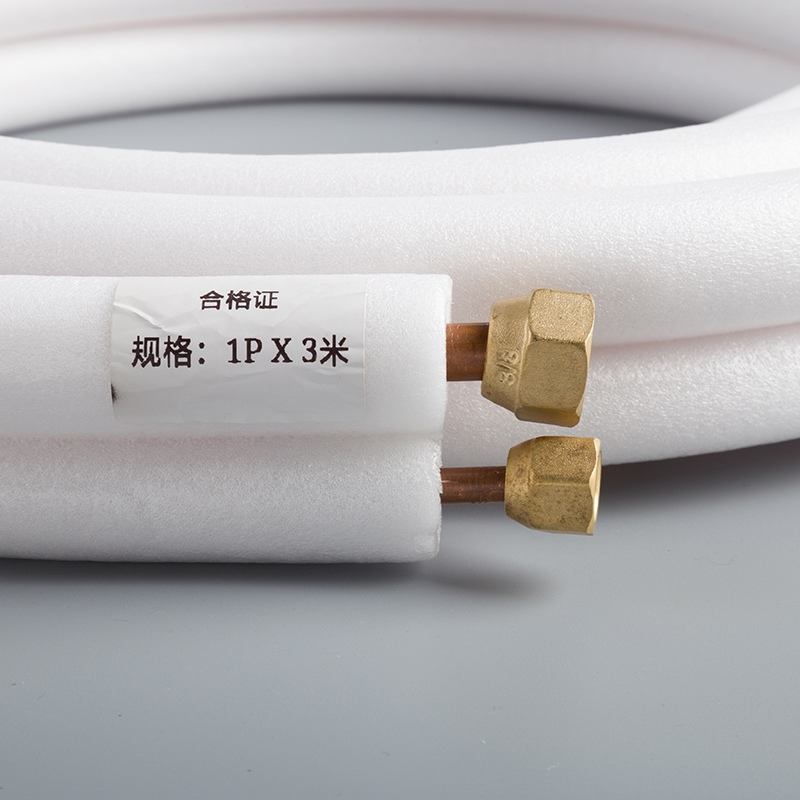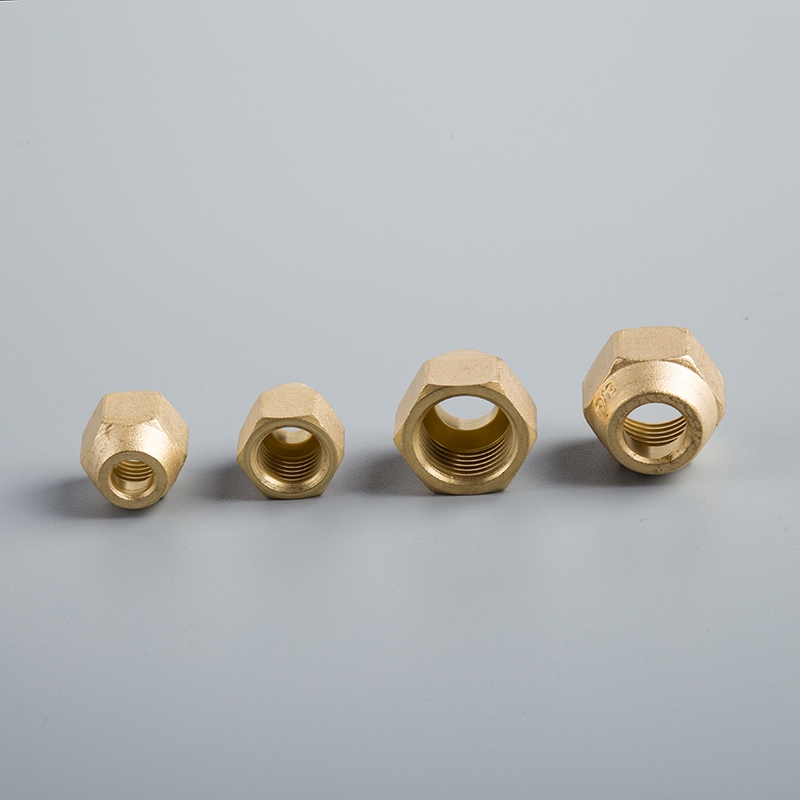How to Insulate Air Conditioning Copper Pipes Efficiently

Proper air conditioning copper pipe insulation is more than just a good idea—it's essential. By ensuring effective air con copper pipe insulation, you can prevent condensation, which often leads to mold and water damage. This not only protects your home but also enhances energy efficiency. Did you know that poorly insulated pipes can waste up to 40% of energy in an average household? By investing in quality air conditioning copper pipe insulation, you can reduce energy bills and extend the lifespan of your AC system. So, take action today and enjoy a more efficient and cost-effective cooling experience.
Identifying the Correct AC Lines to Insulate
When it comes to air conditioning copper pipe insulation, knowing which lines to insulate is crucial. This step ensures that your system runs efficiently and effectively. Let's dive into understanding the role of these copper pipes and how to differentiate between the suction and liquid lines.
Understanding the Role of Copper Pipes in AC Systems
Copper pipes are the unsung heroes of your AC system. They transport refrigerant, which is essential for cooling your home. These pipes are known for their excellent heat conduction, which makes them ideal for HVAC systems. By moving refrigerant quickly, they help maintain a comfortable temperature in your home. Plus, copper's durability and resistance to corrosion mean these pipes last longer, saving you money in the long run.
Did you know? Copper tubes allow high heat transfer capacity in a compact space, resulting in higher system-wide energy efficiency.
Differentiating Between Suction and Liquid Lines
Now, let's talk about the two main types of lines you'll encounter: suction and liquid lines. Each plays a distinct role in your AC system.
Suction Line: This is the larger of the two pipes. It carries the refrigerant in a gaseous state back to the compressor. Insulating this line is vital because it prevents heat gain from the surrounding environment, ensuring the refrigerant remains cool. This helps your AC system work more efficiently.
Liquid Line: The smaller pipe, known as the liquid line, carries refrigerant in a liquid state from the condenser to the evaporator. While it's not as crucial to insulate this line as the suction line, doing so can still help prevent energy loss.
By identifying and insulating the correct lines, you enhance your air conditioning copper pipe insulation efforts. This not only improves energy efficiency but also protects your system from potential issues like condensation and corrosion.
Pro Tip: Insulating AC refrigerant lines is crucial for maintaining an efficient air conditioning system, ensuring effective operation, and safeguarding against condensation and unnecessary energy consumption.
Remember, proper air con copper pipe insulation can make a significant difference in your home's energy efficiency. So, take the time to identify and insulate the right lines for a more effective cooling experience.
Measuring the Pipes
Accurate measurement of your air conditioning copper pipes is a crucial step in ensuring effective insulation. Getting the right measurements helps you select the appropriate insulation material and thickness, which enhances the efficiency of your air con copper pipe insulation efforts. Let's explore the tools you'll need and some handy tips for measuring those tricky, irregularly shaped pipes.
Tools Needed for Accurate Measurement
To measure your pipes accurately, you'll need a few essential tools. Here's a quick list to get you started:
Tape Measure: A flexible tape measure is ideal for wrapping around pipes to get precise circumference and length measurements.
Calipers: These are perfect for measuring the diameter of the pipes, especially when precision is key.
Insulation Thickness Calculator: This tool helps determine the right insulation thickness by considering factors like pipe size, material, and temperature. Choosing the correct thickness is vital for maximizing energy savings and system efficiency.
Pro Tip: Always double-check your measurements to avoid purchasing the wrong size of insulation material. A small error can lead to inefficient insulation and increased energy costs.
Tips for Measuring Irregularly Shaped Pipes
Measuring irregularly shaped pipes can be a bit challenging, but with the right approach, you can get it right. Here are some tips to help you out:
Use a Flexible Tape Measure: For pipes with bends or curves, a flexible tape measure can easily wrap around the contours, providing accurate measurements.
Mark and Measure: If the pipe has multiple bends, mark each section and measure them individually. Add these measurements together for the total length.
Consider Using String: Wrap a piece of string around the pipe, then measure the string with a ruler. This method works well for pipes with complex shapes.
Take Multiple Measurements: For pipes that vary in diameter, take several measurements at different points. This ensures you account for any variations and choose the right insulation size.
By following these tips and using the right tools, you can ensure your air conditioning copper pipe insulation fits perfectly. Proper measurement not only saves you time and money but also enhances the overall efficiency of your AC system.
Selecting Suitable Insulation Materials

Choosing the right insulation material for your air conditioning copper pipes is crucial. It ensures efficiency and longevity. Let's explore the types of insulation materials available and what you should consider when making your choice.
Types of Insulation Materials Available
When it comes to insulating your AC copper pipes, you have several options. Each material has its own benefits and drawbacks. Here's a quick rundown:
Foam Rubber: This material is flexible and easy to install. It provides excellent thermal insulation and is resistant to moisture. Foam rubber is a popular choice for many homeowners.
Polyethylene Foam: Known for its durability, polyethylene foam offers good thermal resistance. It's lightweight and easy to handle, making it a convenient option for DIY projects.
Fiberglass: This traditional insulation material is effective but can absorb moisture over time. It may compress, reducing its insulating properties. Fiberglass is often used in larger installations.
Mineral Wool: More common due to its cost-effectiveness, mineral wool meets specific specifications. It resists moisture better than fiberglass, maintaining its insulating properties longer.
Pro Tip: Consider using mineral wool if you're looking for a budget-friendly option that still offers reliable performance.
Factors to Consider When Choosing Insulation
Selecting the right insulation involves more than just picking a material. You need to consider several factors to ensure optimal performance:
Climate: Your local climate plays a significant role in determining the best insulation. In humid areas, moisture-resistant materials like foam rubber or mineral wool are ideal.
Pipe Size: Measure your pipes accurately to choose the right insulation thickness. Proper fit ensures maximum efficiency and prevents energy loss.
Durability: Look for materials that withstand wear and tear. Durable insulation reduces the need for frequent replacements, saving you money in the long run.
Installation Ease: If you're planning a DIY project, opt for materials that are easy to install. Foam rubber and polyethylene foam are user-friendly choices.
Cost: Budget is always a consideration. While some materials may be more expensive upfront, they could offer better long-term savings through improved efficiency.
By considering these factors, you can select the most suitable insulation for your air conditioning copper pipes. This choice not only enhances energy efficiency but also extends the lifespan of your AC system.
Preparing for Insulation
Before you dive into insulating your air conditioning copper pipes, it's crucial to prepare properly. This preparation ensures a smooth installation process and maximizes the effectiveness of the insulation. Let's walk through the essential steps to get your pipes ready.
Turning Off the AC System
First things first, you need to turn off your AC system. This step is vital for your safety and the integrity of the system. Working on live systems can be dangerous and may cause damage to the components. Here's how you can safely turn off your AC:
Locate the Power Source: Find the circuit breaker or the power switch for your AC unit. It's usually near the outdoor condenser unit or in your home's main electrical panel.
Switch Off the Power: Flip the switch or breaker to the "off" position. This action cuts off the electricity supply to the AC, ensuring a safe working environment.
Double-Check: Confirm that the system is off by trying to turn on the AC using the thermostat. If it doesn't start, you're good to go.
Safety Tip: Always prioritize safety when working with electrical systems. If you're unsure about any step, consult a professional.
Removing Old Insulation and Cleaning the Pipes
Once the AC is off, it's time to remove any old insulation and clean the pipes. This step is crucial for ensuring the new insulation adheres properly and performs effectively.
Remove Old Insulation: Carefully cut away the old insulation using a utility knife. Be gentle to avoid damaging the copper pipes underneath. Dispose of the old material responsibly.
Inspect the Pipes: Check the pipes for any signs of damage or corrosion. Address any issues before proceeding with the new insulation.
Clean the Pipes: Use a damp cloth to wipe down the pipes, removing any dirt, dust, or residue. Clean pipes ensure better adhesion of the new insulation material.
Dry the Pipes: Make sure the pipes are completely dry before applying new insulation. Moisture can compromise the effectiveness of the insulation and lead to issues like mold growth.
Pro Tip: Regular maintenance and inspection of your AC pipes can prevent long-term damage and ensure optimal performance.
By following these preparation steps, you're setting the stage for a successful insulation project. Proper preparation not only enhances the efficiency of your air conditioning system but also extends its lifespan. So, take the time to do it right, and you'll enjoy the benefits of a well-insulated home.
Installing the New Insulation

Now that you've prepared your pipes, it's time to install the new insulation. This step is crucial for ensuring your air conditioning system runs efficiently. Let's break it down into two main tasks: cutting and fitting the insulation, and securing it with tape.
Cutting and Fitting the Insulation
To start, you'll need to cut the insulation material to fit your pipes perfectly. Here's how you can do it:
Measure the Length: Use your tape measure to determine the length of each pipe section. This ensures you cut the insulation to the correct size.
Mark the Insulation: Lay the insulation flat and mark the length you need with a pencil or marker. This helps you cut accurately.
Cut the Insulation: Use a sharp utility knife or scissors to cut along the marked line. Make sure the cut is straight for a snug fit.
Fit the Insulation: Open the slit in the insulation and slide it over the pipe. Ensure it covers the entire length without any gaps.
Pro Tip: For bends or curves in the pipes, cut the insulation into smaller sections. This allows for easier fitting around corners.
Securing the Insulation with Tape
Once the insulation is in place, you'll need to secure it to prevent it from slipping or coming loose. Follow these steps:
Choose the Right Tape: Use a high-quality insulation tape, such as PVC or duct tape. This provides a strong hold and resists moisture.
Wrap the Tape: Start at one end of the insulated pipe and wrap the tape around it. Overlap each layer slightly to ensure full coverage.
Seal the Joints: Pay special attention to the joints where two pieces of insulation meet. Wrap extra tape around these areas to create a tight seal.
Check for Gaps: Inspect the entire length of the pipe for any gaps or loose sections. Add more tape if necessary to secure the insulation firmly.
Quick Tip: Regularly check the insulation for wear and tear. Replace any damaged sections promptly to maintain efficiency.
By following these steps, you can effectively insulate your air conditioning copper pipes. Proper installation not only improves energy efficiency but also extends the life of your AC system. Enjoy a cooler home and lower energy bills with well-insulated pipes!
Maintenance and Professional Help
Keeping your air conditioning system in top shape requires regular maintenance and knowing when to call in the pros. Let's explore the signs that indicate you might need professional help and the benefits of regular maintenance.
Signs That Indicate the Need for Professional Assistance
Sometimes, your AC system might show signs that it's time to bring in a professional. Here are some indicators:
Unusual Noises: If you hear strange sounds like banging or hissing, it might be a sign of a problem. These noises can indicate issues with the compressor or refrigerant lines.
Increased Energy Bills: A sudden spike in your energy bill could mean your system is working harder than it should. This might be due to poor insulation or other underlying issues.
Inconsistent Cooling: If some rooms are cooler than others, your system might not be distributing air evenly. This could be a sign of ductwork problems or an inefficient system.
Frequent Cycling: If your AC turns on and off more frequently than usual, it might be struggling to maintain the set temperature. This can lead to increased wear and tear.
Testimonial: "Precise saved me $3600! Couldn't be happier that they helped extend the life of the current condensing unit." - Satisfied Customer
When you notice these signs, it's wise to consult a professional. They can diagnose and fix the issues, saving you money and extending the life of your system.
Benefits of Regular Maintenance
Regular maintenance is key to keeping your AC system running smoothly. Here are some benefits: regular maintenance
Improved Efficiency: Routine check-ups ensure your system operates at peak efficiency. This means lower energy bills and a more comfortable home.
Extended Lifespan: Regular maintenance can add years to your system's life. By addressing minor issues before they become major problems, you can avoid costly replacements.
Better Air Quality: Clean filters and ducts mean cleaner air in your home. This is especially important for those with allergies or respiratory issues.
Peace of Mind: Knowing your system is in good hands gives you peace of mind. You can rest easy knowing your home will stay cool and comfortable.
Testimonial: "I was impressed with the time Melvyn took to explain how my system works and why it needed replacement. The installers applied a protective film over my new carpet to keep it spotless which I never seen done before." - Melvyn
Regular maintenance not only keeps your system running efficiently but also ensures a comfortable and healthy living environment. So, don't wait for problems to arise—schedule regular check-ups and enjoy the benefits of a well-maintained AC system.
You've learned the essential steps to insulate your AC copper pipes efficiently. By identifying the correct lines, measuring accurately, and selecting suitable materials, you ensure your system runs smoothly. Proper insulation offers long-term benefits like reduced energy consumption, lower bills, and extended system life. It also prevents condensation and noise, enhancing comfort. If you encounter challenges, don't hesitate to seek professional help. Regular maintenance keeps your AC in top shape, ensuring a cool and efficient home. Take action today and enjoy the rewards of a well-insulated system!
See Also
Enhance Your AC Performance Using Copper Pipe Insulation
The Benefits of Selecting Copper Pipes for AC Systems
The Importance of Pure Copper Pipes for AC Efficiency
Transforming Air Conditioning with Pure Copper Pipe Technology


